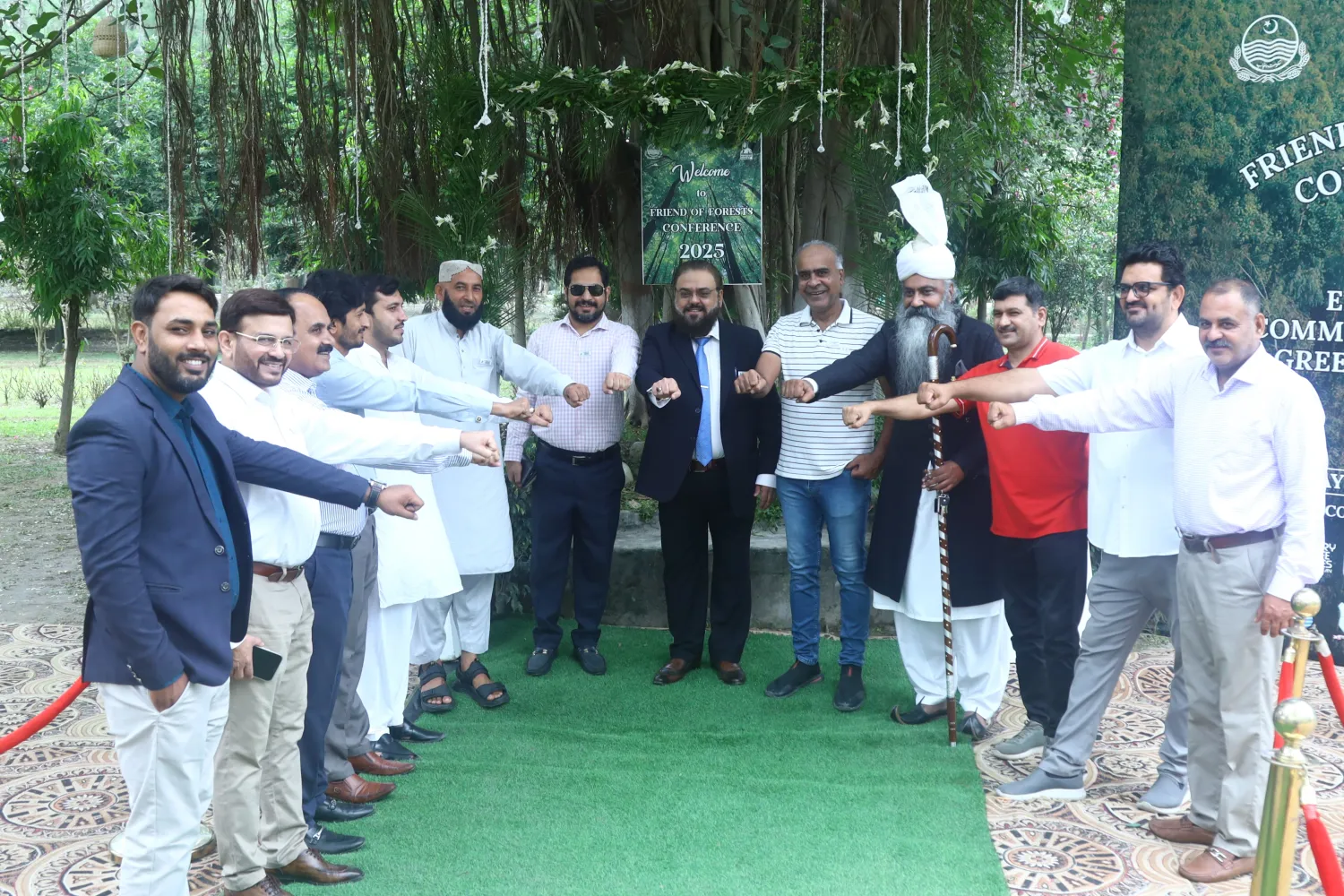
- Home
- About Us
- Canvas
- Echo Tech
- Kids Enclosure
- Gallery
- Team
- E-Services
- Contact Us

Article of the week
FRIENDS OF FORESTS CONFERENCE 30TH AUGUST 2025
Summary
The Friends of Forests Conference 2025, organized by the Punjab Forest Department, gathered government officials, Academia, NGOs, nature lovers, environmental enthusiasts, plantation activists, media, and youth under the theme “Engaging Communities for a Greener Punjab.” The conference aimed to inspire collective action for afforestation, biodiversity conservation, and climate mitigation. Participants were introduced to ambitious plantation targets, modern forestry technologies including drones, GIS, and AI-based monitoring, and community-based initiatives such as Miyawaki forests, farm forestry, and Agroforestry. Documentaries and presentations further highlighted digital solutions like helpline 1084 for reporting illegal logging and advanced forest mapping through LIDAR technology.

The event featured keynote addresses, technical presentations, and three panel discussions focusing on community engagement, cultural and behavioral change, and urban forestry. Speakers emphasized the importance of indigenous species, stricter anti-logging laws, integration of environmental education in schools, and community ownership of forestry projects. Success stories showcased the potential of collaborative action, while discussions underlined that government efforts alone are insufficient without grassroots involvement. Directorate General of Forests Punjab acknowledged and appreciated the unwavering dedication and persistent efforts of well-known green activists for promotion of Green Cover in the Conference. The conference concluded with a unified commitment to build a sustainable, resilient, and greener Punjab through partnerships, innovation, and active citizen stewardship.
The key outcomes emphasized the promotion of sustainable eco-tourism and the need to ensure that forests should not remain restricted or no-go areas. It was highlighted that existing forest parks must be increased and upgraded, following the successful model of Jallo Park, which is well maintained. Adopting a comprehensive Forest Policy was recommended, along with encouraging joint ventures that focus on Agro-Forestry and promoting rooftop gardening and plantations. The outcomes also stressed the importance of promoting indigenous and climate-resilient species, while integrating climate change and green cover enhancement awareness into school syllabi or extracurricular activities to influence children’s behavioral change, with marks allocated for such activities. Furthermore, the development of policies for free or nominally subsidized plant supply was suggested, and it was proposed that standing private woodlots may be declared as banking collaterals. Finally, traditional forestry practices supported by nature-based solutions were strongly encouraged to ensure sustainable forest management.
Conference Design Preview
Loading document preview...